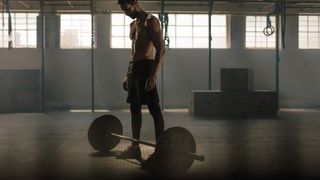How To Get Stronger
Train smarter and target your key muscles, and you’ll look and feel better after every gym session

Everyone should do some strength training. Research from Harvard Medical school, among others, shows that it can prevent everything from osteoporosis to age-related cognitive decline. But once you’re past the baseline – according to the World Health Organisation, that’s just two “strength-promoting” sessions per week, which can include bodyweight exercise and comes with a 16% reduction in your chances of premature death – what exactly are you shooting for?
Strength is distinct from muscle in that you’re aiming for bigger numbers on the board, not heftier quads or biceps – and because you can get it by teaching your muscle fibres to fire more efficiently together, not just by growing more of them. In a 2017 study, researchers at Oklahoma State University found that lifters working with 80% or more of their one-rep max improved the efficiency of the nerve cells carrying signals from the brain to the working muscles – making training more time-efficient, and adaptations faster. To put it another way, strength isn’t built; it’s granted to you by your body, and by training specifically for it, you’ll be able to lift heavy, fast... even if your chest isn’t getting bigger.
How To Get Stronger
Lift heavy
“The current scientific literature’s quite clear – to get strong, you need to lift heavy,” says powerlifter and strength coach Joel Dowey. “But that doesn’t mean testing your 1RM every week – that won’t make you stronger and could potentially make you weaker. Work between 75 and 90% of your 1RM in various rep ranges, aiming for 12-20 reps in total for a big move. For instance, you could do six sets of six squats at 75% of your one-rep max, or ten sets of two at 85-90%.” Don’t know your 1RM? Find an online calculator.
Go big early
“Schedule your big lifts at the start of the session when you’re freshest,” says Dowey. “This seems fairly obvious but I’ve witnessed people try to bench press heavy after they have done a few sets of bodyweight dips. At the same time, don’t warm up excessively: sets of three reps to begin with, then singles as you get closer to the working weight. If the single didn’t feel right, rack it, rest and do another until it does. Then, and only then, move on to your working sets.”
Add flavour
“Assistance work – the stuff you do after your big movements – should be as specific to the main lift as possible,” says Dowey. “For example, bent-over rows and lat pull-down both work the back muscles, but rows are more specific to the deadlift movement. Front squats are more specific to the back squat than leg press is.” You can go for higher reps on these: eight to ten reps for three to five sets will get it done. Stick to one main lift and two assistance lifts per session – and give all of them everything you’ve got.
See related
- Six-Week Strength Training Workout Plan
- How To Get Strong
- How To Use The Big Three Lifts To Get Strong, Build Muscle Or Burn Fat
Key moves
Powerlifters often focus on the “big three” used in competition: back squat, bench press and deadlift. That’s not a bad start, but to ensure you’re balanced in all directions, you’d be advised to add some overhead pressing. A strict overhead press will build more shoulder strength and size, while a push press with some leg drive builds co-ordination and lets you shift more weight. You’ll also want to make sure you do some pulling to make sure you’re balanced, so add chin-ups and bent-over rows to your plan.
Don’t worry about the clock
“If you’re going for fat loss or muscle you should stick to your prescribed rest periods, but there’s no set rest time required for strength training,” says Dowey. “Normal rest time between sets is usually between 60 and 90 seconds. For strength training it should be a minimum of two minutes, but some people will find they need up to five minutes between heavy working sets. It’s trial and error with most people.” As a rule, simply rest until you feel almost fully recovered and raring to go again.
Get the Coach Newsletter
Sign up for workout ideas, training advice, reviews of the latest gear and more.
From 2008 to 2018, Joel worked for Men's Fitness, which predated, and then shared a website with, Coach. Though he spent years running the hills of Bath, he’s since ditched his trainers for a succession of Converse high-tops, since they’re better suited to his love of pulling vans, lifting cars, and hefting logs in a succession of strongman competitions.

